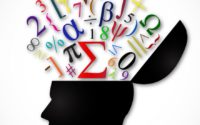How to help School Students Understand Geometry
How to help Students Understand Geometry
Playing with shapes ushers children into geometry long before they set foot in the classroom and formally study it. Though children can naturally think spatially, deliberate instruction is required as a scaffolding to navigate them through several levels of geometric understanding and reasoning.
Since children can only memorize geometric facts and rules and don’t think deductively and are unable to understand the relationships between ideas, it is inappropriate to teach them geometry, the Euclid way which is learning to construct the geometric system using the same logical construction of axioms, definitions, theorems and proofs as taught using this approach.
This surfaced after painstaking fundamental research by a husband and wife team: Pierre and Dian Van Hiele and supplemented by many other researchers from around the world. Though this research has been influencing school curricula worldwide yet, its practical details are largely unknown to teachers.
Van Hiele theory presents a hierarchy of levels of geometric thinking spanning the ages five through adults. Though originally there were five levels that have been adapted and renamed by different researchers, now Van Hiele concentrates on the three levels that cover the period of schooling.
Levels of Geometric Thinking
Visual:
This level is akin to non-verbal thinking. Here a child recognizes the words by sight long before he/she understands individual letter sounds and how they combine to form words. Shapes are distinguished by their appearance and viewed as a whole than by any associated component parts. Although basic shape names are known, there is no explanation offered or any association made. They may say it is a square because it looks like one or a rectangle because it looks like a box.
Descriptive:
At this level children can identify and describe the component parts and their associations. They develop appropriate language to cope with new concepts. However, they can’t yet appreciate the relationships between the properties of individual components. They will describe that an equilateral triangle has three equal sides and is different from the rest of the triangles, but they will not be able to say that an equilateral triangle has three equal angles.
Informal Deduction:
The properties of shapes and their logical relationships are understood at this level. Students can see one property precedes or follows from the other and deduce one property from the other. They can apply what they already know to explain shapes and formulate definitions. They could explain why all squares are rectangles. The informal deduction such as this forms the foundation for the formal deduction the place of axioms, definitions and theorems are not understood.
Activities to Develop Geometric Thinking
Included in the Van Hiele’s theory are the five phases of activities designed to promote student’s thinking from one level to the next.
Inquiry:
Children thrust into play by the teacher gives them various shapes and structures. They explore the objects tactilely trying to fit one shape into another and are encouraged to talk to the other students about the shapes they hold in their hands. While the children are playing the teacher has ample opportunity to observe and assess the child’s thinking and language.
Direct Orientation:
Activities are presented to the children in a way that a particular shape or property of the shape is brought into focus. The ideas for this phase arise from play and pre-planning. In play, the child may combine two shapes to form a third shape. The teacher then can provoke the students by asking them if all the shapes can be made from fitting two shapes together. From these activities children gain specific understanding about shapes. They find out some lengths are equal and some are not and they can visualize how angles fit together and can flip shapes to fit appropriate spaces.
Explication:
Tasks and games are incorporated in this phase to deliberately develop the vocabulary associated with the ideas the students have encountered so far while still continuing to explore shapes and their properties. Here, the teacher clarifies the terms students already know and introduces new ones. Students go through activities that help them to talk and write about their experiences.
Free Orientation:
Children engage in activities and tasks that can be completed in different ways. The goal in this phase is for the students to take what they already know and become proficient at it.
Integration:
Now, the children have reached a stage where they can pull together all their knowledge and think about it as a whole. They will be able to summarize what they had learnt all through these five phases.
By engaging in activities through all these phases the students develop how to think geometrically. They would have gone from the simple recognition of shapes to discussing specific geometric properties to making comparisons between them. They would have progressed from visual to descriptive to informal deduction level of thinking geometrically.







